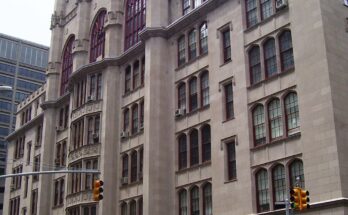By Kalima McKenzie-Simms
Macbeth seized the Lovinger theater in the theater department’s Spring production.
Macbeth is a dark, bloody story of power thirsty noblemen who will stop at nothing, even murder, to obtain the crown. Macbeth and Lady Macbeth are given a prophecy from three witches who tell them that they will become royalty. Excited by the prediction, the couple decides to speed up the process by murdering Duncan, King of Scotland, as well as Banquo a general and former friend of Macbeth. The two are driven mad by the guilt of their actions.
The theatre department’s production, from March 18th through March 22nd, was exciting and dark. The fight scenes especially were high energy and powerful. However, someone with no prior knowledge of the plot or Shakespearian dialect would have trouble following along.
The casting, for the most part, was excellent. From the beginning until the end when they were both driven insane with power, the actors who played Macbeth (Jonathan Carter) and Lady Macbeth (Emily Holland) had clear chemistry on the stage. During one of their first scenes together, Macbeth held his wife’s face in his hands and looked at her with adoration. When they spoke to each other, the audience could feel that they had a close relationship. Towards the end, while they planned the king’s murder, they even shared the same menacing glare that purposefully frightened the audience.
The three witches, played by Monet Fuentes, Shanell Martinez, and Nandanie Devi were perfectly in sync. They portrayed the dark undertones in the play very well. Their voices quivered and boomed confidently at the same time. Nandanie Devi, who played the first witch, terrified the audience with her facial expressions. She crafted a piercing stare and slithering body motions that sent a shiver through the audience.
Although most of the cast depicted their characters and emotions well, Adeyinka Adebola struggled in his role of Macduff. During the scene in which he was told that Macbeth slaughtered his entire family, his response was more surprised than pained, which would have been a more natural human response to that kind of news. Many of his lines, such as his proclamation of “Horror!” in Act One, though delivered with a loud voice, lacked emotion behind them.
Susan Soetaert designed the costumes. She put a modernized grunge twist on the wardrobe. There was a lot of flannel and dusty combat boots, which fit well with the show. The costumes enhanced the performance and did not detract from the acting.
The set, which was designed and built by Christopher Higgins and his staff, was very complex. There were platforms extended above the stage and lights hanging from every rung. There were secret compartments for the witches and ghosts to slither out of. The set did not overpower the stage and there was more than enough room for the actors to move around freely.
The scene where Macbeth has a vision of a bloody dagger was strange. The three witches sat at the foot of the stage and sang a long, simultaneous “hummm” that lasted throughout Macbeth’s entire monologue. The sound was very distracting, and overpowered his speech. There were other choices, however, that worked very well, such as the decision to use long thin pipes instead of swords. It was a safer alternative to swords, which would have been plastic, and clearly fake.
In the first performance the cast spoke too rapidly for the audience to understand. The Shakespearian language alone is difficult for many people to understand, so reciting their lines as fast as they did makes it difficult to comprehend. However in the last performance on Sunday afternoon, the members of the cast, especially Edgard Toro who played the king’s son, carefully enunciated each line and slowed down their speech.
The background music and the lighting were in sync during opening day, however, closing day there were a number of noticeable delays. After Banquo, played by Donald Salazar, is killed, his ghost comes back to haunt Macbeth during the grand feast. On opening day, when Banquo’s ghost appeared suddenly, the lights turned green and a sharp dissonant chord played over the speakers as quickly as he appeared. The technical aspects were a few seconds too slow during the final performace, which took away from how startled the audience was.



